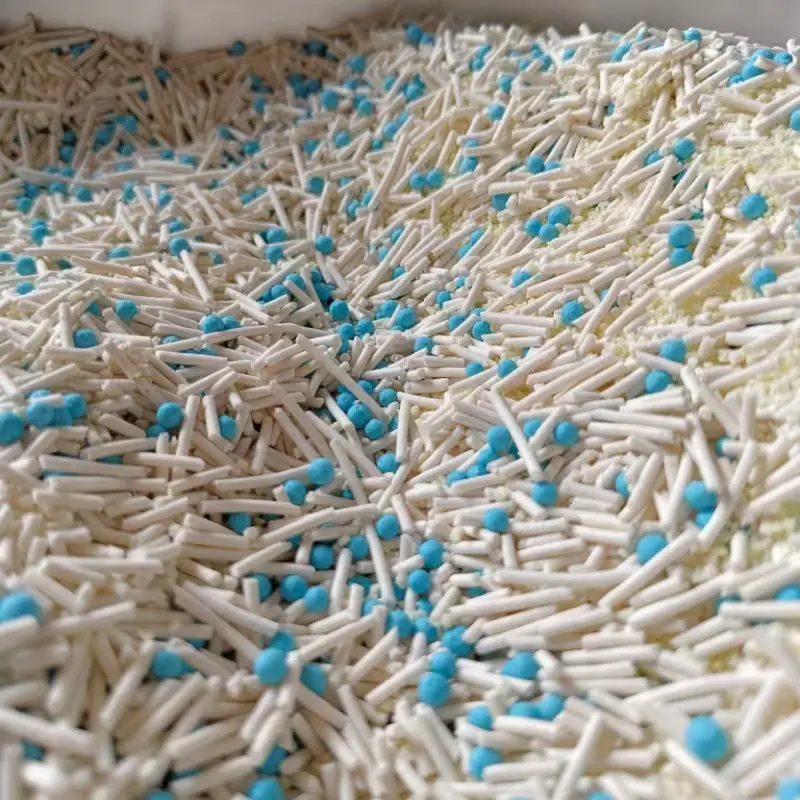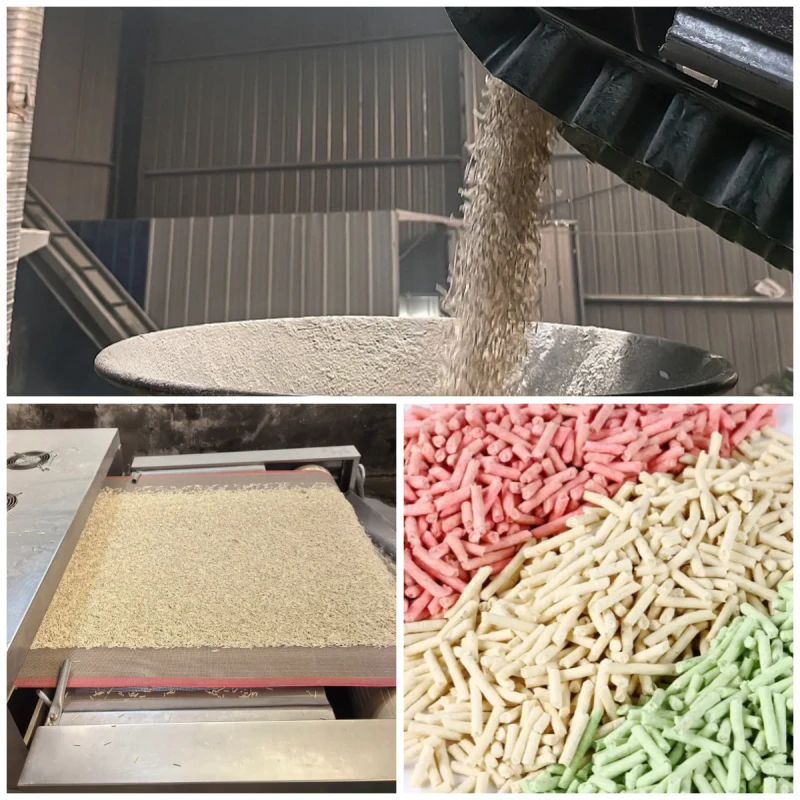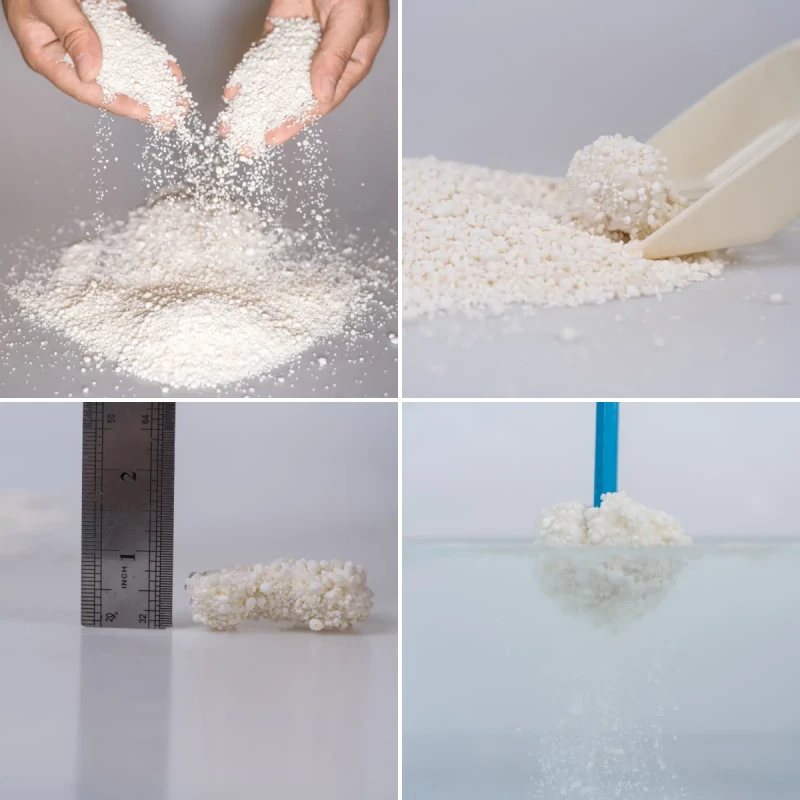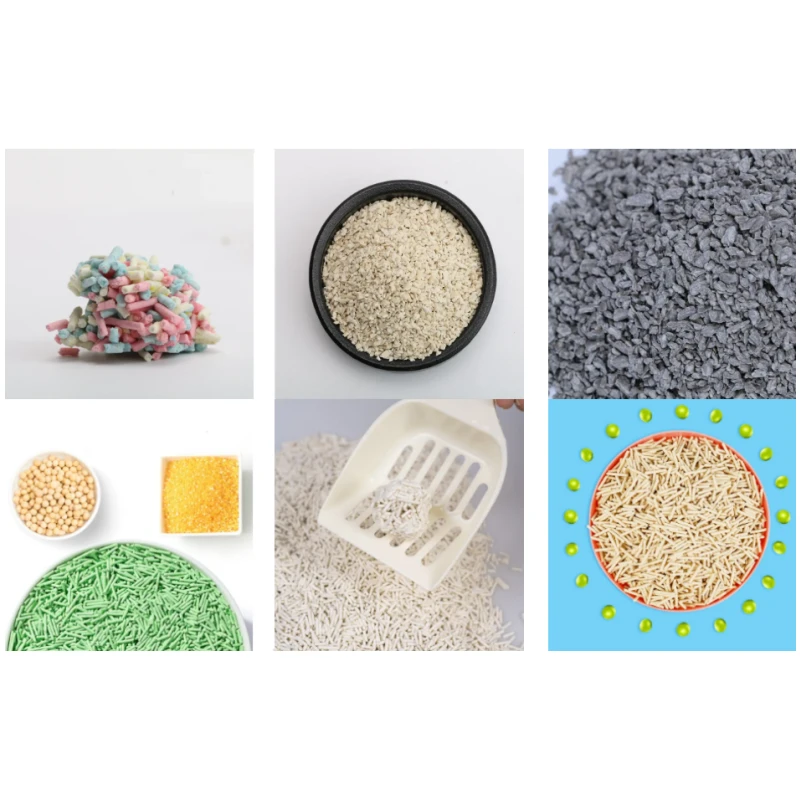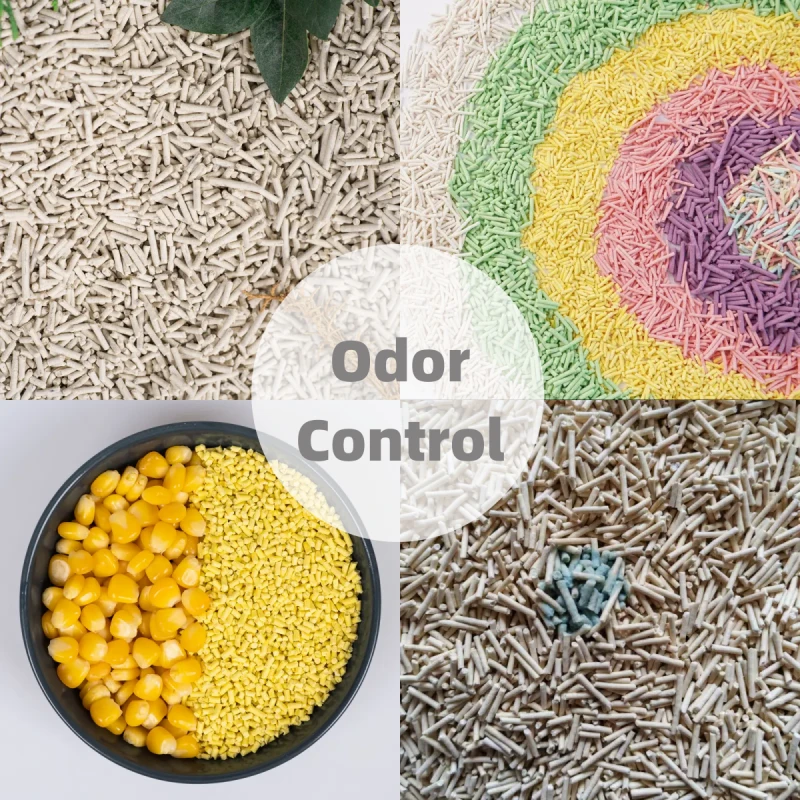Cats are extremely clean animals. This nature does not originate from human domestication, but is closely related to the survival habits of cats’ ancestors in the wild. Compared with people who have raised dogs and are worried about dogs urinating everywhere, cats’ nature makes them naturally use cat litter, which brings convenience and cleanliness to domestic cat owners.
Starting from about two months after birth, cats will use cat litter spontaneously without human instruction, burying urine and feces until the smell is completely buried. This behavior is not only related to the nature of cleanliness, but also to the survival strategy of cat ancestors in the wild.
Cats' ancestors lived by hunting in the wild. Contrary to dogs' urinating and occupying territory, cats show extremely cautious traits. When defecating, they dig a hole in the sand and bury it carefully to avoid predators or other animals from discovering their whereabouts. This habit also prevents enemies from knowing your cat's health and from attacking you when you are sick.
Although cats have been domesticated by humans, they have maintained this excellent nature. Therefore, modern cat owners need to use cat litter, which is actually a continuation of the tradition of sand used by cat ancestors. Cat litter not only provides a suitable place for cats to excrete, but also creates a clean and hygienic home environment for owners.
Cats’ natural tendency to be clean and use cat litter is not influenced by human domestication, but stems from their nature to survive in the wild. By fully understanding this good habit of cats, we can better meet their living needs and create a pleasant and hygienic coexistence environment.
Precisely because cats have the natural habit of using cat litter, this has broad stability and growth potential for the cat litter market. If you are also optimistic about the cat litter market, let’s discuss the steps and possibilities of creating a private cat litter brand.
Current development status and growth trends of the global cat litter market
According to Apple Market Research, the global cat litter market will grow at a CAGR of 4.48% during the forecast period (2023 to 2030).
The pet industry has been on a growth trend over the past few years, and that includes the cat litter market. As more and more families choose to keep cats as pet companions, the demand for cat litter has also increased accordingly. People are paying more and more attention to the health and comfort of their pets, so the demand for cat litter with high absorbency, deodorizing effect and environmentally friendly performance is also rising.
In the cat litter market, various types of products have emerged, such as traditional fine litter, clumping cat litter, Peanut shell cat litter,plant fiber cat litter, and silica gel cat litter. Consumers have a higher preference for cat litter products that are more convenient and easy to use, have good deodorizing effect, and have strong environmental performance.
Rising cat ownership rates globally are expected to have a positive impact on market expansion. Most cat owners prefer to keep their cats indoors due to multiple factors, including human aversion and unfavorable weather, and these variables are expected to drive product demand over the forecast period. The market is driven by cat litter products as cat litter is essential for maintaining the health of cats and residents in the home.
In addition, innovative biodegradable, fragrance-free and chemical-free natural sand is in high demand and production is increasing. For example, the Smart Cat All Natural Clumping Litter is 100% grass-based, chemical- and fragrance-free, and biodegradable. It also contains no dust or chemicals. Due to the negative impact clay and silica-based cat litters have on the environment and human health, cat owners are looking for more natural and environmentally friendly options for their pets. Producers will have new opportunities to replace bentonite waste with environmentally friendly waste. Domestic cats spend a lot of time in the litter box, where they inhale and eat the litter, adding to the pressure to reduce the chemical content of the litter box. Therefore, as pet health awareness increases, the market for natural cat litter is also accelerating.
Therefore, manufacturers of pet cat litter are likely to focus on residential and commercial clusters.
Advantages of Private Label Cat Litter
There are many benefits to private label cat litter that have led many companies to choose this strategy to launch their own branded cat litter. Here are some benefits of private label cat litter:
1.Brand uniqueness
Private label cat litter allows companies to establish a unique brand image. They can design their own packaging, brand identity and marketing so that they have a distinct personality in the market and differentiate themselves from other brands.
Packaging Design: Private labeling allows companies the freedom to design unique packaging that highlights the product’s shelf appeal. Companies can choose unique colors, patterns, and shapes to visually differentiate their products from competitors.
Brand Identity: Private labeling offers companies the opportunity to develop a unique brand identity. Companies can create a personal and recognizable logo to establish their own unique brand identity in the market.
Marketing: By having a private label, a company can develop a unique marketing strategy. They can design advertisements, promotions and social media promotions based on the characteristics of the target audience to establish a unique image of their brand in the minds of consumers.
Differentiation Positioning: Private labeling allows a company to clearly differentiate itself from other brands by emphasizing unique features. Whether it's in product formulation, material selection or sustainability, companies can find something unique about themselves that appeals to specific groups of consumers.
Responsiveness: Private label companies have more flexibility to adjust based on market feedback and trends. They can quickly respond to consumer needs and innovate products without the inherent limitations of other brands.
Brand uniqueness allows private label cat litter to stand out in the market, establish a unique brand image, attract specific consumers and win their loyalty. This provides companies with the opportunity to carve out a unique position in the industry.
2.Higher profit margins
Private labels typically have higher profit margins than selling other company-branded products. This is because companies can obtain more competitive prices by manufacturing directly or negotiating with manufacturers.
Private label cat litter can often achieve higher profit margins than selling other company's branded products. This advantage comes from several sources, making private labels more economically attractive.
Direct Manufacturing: When companies choose private label, they have the option of manufacturing their products directly instead of relying on a third-party brand’s supply chain. This eliminates the cost of middlemen and allows companies to control production costs more effectively.
Customized pricing: Private label offers greater pricing flexibility than selling products under other company brands. Companies can set product prices based on market demand, cost structure and target profit margins without being restricted by other brands' pricing.
Production Cost Negotiation: Private label companies are often able to negotiate more favorable production costs with manufacturers. Because they work directly with manufacturers, they can negotiate prices more flexibly and achieve more competitive production costs.
Avoid middlemen fees: Private labels don’t have to pay the brand licensing fees that other brands typically pay. In this way, the company can reduce transaction costs with brand owners or licensors, further increasing net profits.
Higher profit margins are a significant financial advantage on a business level for companies that choose private label cat litter. This allows private labels to be more competitive in the market, providing companies with greater profit potential.
3.Pricing flexibility
Having a private label gives a company more flexibility in pricing its products. They can set prices based on market demand, cost structure and competition without being restricted by other brands' prices.
Private label cat litter provides companies with a more flexible pricing strategy, allowing them to price their products based on different factors. Here's a detailed explanation on this:
Market demand: Companies can adjust product prices based on changes in market demand. If market demand for environmentally friendly cat litter increases, the company has the flexibility to increase product prices to reflect this trend.
Cost Structure: Private labeling gives companies more direct control over production costs. If production costs change, companies can flexibly adjust product prices to ensure they can still achieve the desired profits.
Competitive Situation: Companies can adjust their prices based on competitive situations to stay competitive in the market. If other brands lower their prices, private labels can respond flexibly and develop competitive pricing strategies.
Market positioning: Based on the positioning and target market of the private brand, the company can formulate corresponding price strategies. If a company's goal is to provide high-end, high-quality cat litter, they can be flexible in pricing to reflect that brand image.
Promotions: Private label allows companies to flexibly adjust prices based on promotions. For example, they can stimulate sales and increase market share through limited-time offers, discounts, or package sales.
Pricing flexibility enables companies to be more adaptable to market dynamics and formulate strategic pricing policies more effectively. This provides an important economic advantage for private label cat litter to gain an edge in market competition.
4.Quality control
Companies have more control over the quality of private label cat litter. They can choose to formulate their own formulas and ensure the products meet their quality standards, thereby building consumer trust in the brand.
Private label cat litter brings a higher level of quality control to the company, which is critical to ensuring product quality and building consumer trust. The following are several aspects about quality control:
Private label: Private label allows companies to choose and formulate their own cat litter formula. This means they can select the highest quality raw materials based on their own standards and values, ensuring the quality of their products meets the company's expectations.
Production process control: Having a private label allows companies to better monitor the entire production process. They can implement strict production standards and processes to ensure that every production step meets the company's quality standards.
Quality Testing: Private label companies typically implement more stringent and frequent quality testing procedures. This includes testing of raw materials, semi-finished products and final products to ensure that each batch meets high quality standards.
Brand Credibility: By ensuring the high quality of private label cat litter, companies are able to build good brand credibility. This is critical to attracting and retaining the trust of consumers, who are more inclined to purchase products with reliable quality.
Continuous Improvement: Private label companies typically devote more resources to product development and improvement. This allows them to continuously improve the quality level of their products, meet market demands and adapt to changes in consumer expectations.
Quality control allows private label cat litter companies to provide high-quality products and build consumer trust in the brand. This provides the company with a solid foundation to gain market share and long-term success.
5.Customer Loyalty
By offering unique and high-quality products, private labels can build customer loyalty. Customers may choose to purchase cat litter from a specific company because they have trust in the brand and have had a satisfactory experience with it.
By offering unique and high-quality products through private labels, companies can build customer loyalty. Here are a few aspects of customer loyalty:
Brand Trust: High-quality private label cat litter earns consumer trust. When customers are satisfied with the quality of a product, they are more likely to develop trust in the brand and become loyal consumers.
Satisfactory user experience: Providing unique and high-quality products can ensure that consumers have a good user experience. Meeting customers' needs and delivering superior performance makes them more likely to choose to continue purchasing cat litter from that brand.
Brand Loyalty: Once consumers have established trust in a private brand and obtained a satisfactory usage experience, they tend to remain brand loyal. This means they are more likely to choose a product from that brand when shopping instead of trying another brand.
Word-of-mouth: Loyal customers often actively share their positive experiences and recommend the brand to others. This kind of word-of-mouth communication helps expand the brand's influence and attract more potential customers.
Brand Identity: A loyal relationship with a private brand often reflects the customer's identification with the brand. They may view the brand as an option that aligns with their values and preferences, making them more inclined to support it in the long term.
Customer loyalty is a positive cycle. By providing excellent products and services, private brands can continuously consolidate customer loyalty and create more opportunities for the sustainable development of the brand.
6.Market share
Private label cat litter helps a company establish its position in the market. By offering unique and high-quality products, companies can win more market share and stand out in a highly competitive market.
Private label cat litter helps companies establish their position in the market and win more market share by offering unique and high-quality products. The following are several aspects about market share:
Product Differentiation: Private labels can achieve product differentiation by offering unique and high-quality cat litter. This differentiation allows companies to stand out in a highly competitive market and attract more consumers to choose their products.
Brand Awareness: By building awareness of private label cat litter, a company can gain greater exposure in the market. As a brand's visibility increases, consumers are more likely to prioritize the brand when shopping, thereby increasing market share.
Brand Awareness: Successful promotion of private label helps to increase brand awareness. When consumers establish a positive association with a brand and recognize the quality of its products, they are more likely to become loyal supporters of the brand, thereby driving market share growth.
Consumer Satisfaction: Offering high-quality private label cat litter can increase consumer satisfaction. Satisfied customers are more likely to repurchase and spread a positive brand image through word-of-mouth, thereby capturing a larger share of the market.
Competitive Advantage: By building a private label competitive advantage, a company is better able to withstand challenges from competitors. Unique and high-quality products enable the company to remain competitive in the market, thereby increasing market share.
Increasing market share is one of the keys to the success of private label cat litter. Through differentiated and high-quality products, companies can win more consumers in a highly competitive market and establish their position in the industry.
Private label cat litter provides companies with the opportunity to develop unique brand strategies, achieve higher profit margins, improve quality control, and succeed in a highly competitive market. These benefits are enough for ambitious cat litter brands to start their branding journey.
So what do you do if you're ready to start private labeling custom cat litter?
Getting started with private labeling custom cat litter involves a series of steps. Here is a detailed plan to help you get started on your private label cat litter customization process:
1.Market research
Before deciding to enter the cat litter market, conducting thorough market research is key. Understand target audiences, market needs, competitors and industry trends in order to develop targeted product positioning and market strategies.
2.Develop a unique selling point
Standing out from the crowd of competitors requires a unique selling point. Consider the ingredients, functionality, environmental friendliness, etc. of the cat litter to find a unique feature that will attract your target customers and differentiate it from your competitors.
When formulating a unique selling point, it is necessary to deeply consider the ingredients, functions, environmental protection, etc. of the cat litter to find a unique feature that can attract target customers and differentiate the product from competitors. Here are some possible unique selling points:
Natural ingredients
If your cat litter uses natural ingredients, such as plant fiber, corn, or tofu, you can emphasize that it is environmentally friendly, harmless, and healthy and friendly to cats.
Antibacterial and deodorizing functions
If your cat litter has strong antibacterial and deodorizing properties, you can use this as a selling point to attract consumers who are concerned about household cleanliness and odor issues.
Fast setting and easy cleanup
If the cat litter has the characteristics of quick solidification and easy cleaning, it can be emphasized to provide a more convenient use experience and reduce the owner's cleaning burden.
Low dust formula
If cat litter can reduce dust production, a low-dust formula may become an attraction, especially for owners concerned about their cat's respiratory health.
Degradable and environmentally friendly
Emphasizing the degradability and environmental friendliness of cat litter may be attractive to consumers who value sustainability and eco-friendly products.
Fragrance options
Provide different scent options to meet customers' personalized needs, such as lavender, lemon, etc.
Custom packaging design
Design unique and eye-catching packaging to make the product stand out on the shelf and build brand image.
Health protection
If the cat litter undergoes strict quality control, it can emphasize its health protection for cats and attract owners who pay attention to the health of their pets.
Price competitiveness
Provide cost-effective products to attract price-sensitive consumers.
Brand story
Build an interesting or touching brand story to make it easier for consumers to remember your product.
Choosing a unique selling point that fits the target customer group and can clearly differentiate it from competitors will help improve the product's appeal and market competitiveness.
3.Choose the right manufacturer
Finding a reliable manufacturer is key. Choose a manufacturer with a good reputation, professional experience, and fit for your product needs. Communicate with multiple manufacturers to understand their production capabilities, processes and costs.
Choosing the right manufacturer is a critical step in ensuring the quality of your product and smooth production. Here are some suggestions to help you find the right manufacturer:
Good reputation
Look for manufacturers who have a good reputation in the industry. Check their reputation through online reviews, official websites, customer feedback, and industry forums.
Professional Experience
Choose a manufacturer with extensive professional experience. An experienced manufacturer may have a better understanding of the challenges in the production process and be able to provide better solutions.
Meet product requirements
Make sure the manufacturer's production capabilities and technology match your product needs. Different manufacturers may have expertise in different areas, choose the one that suits your type of product.
Production capacity
Understand the manufacturer's production capabilities and make sure they have enough capacity to meet your needs. Ask them if they can meet the requirements for mass production.
Craftsmanship and Technology
Learn more about the manufacturer's production processes and technologies used. Make sure they use advanced production technology to ensure product quality and consistency.
Cost
Compare the cost structures of different manufacturers to make sure their quotes are within your budget. At the same time, don’t just choose the cheapest option, but consider quality and service.
Sustainability
If sustainability is critical to your product and brand, make sure the manufacturer meets relevant environmental and social responsibility standards.
Sample testing
Before formal cooperation, manufacturers are required to provide samples for product quality testing and evaluation. This will help ensure the final product meets your standards.
Contract and Terms
Carefully review the contract and terms provided by the manufacturer. Make sure all key details are clearly specified, including delivery times, payment terms, quality standards, etc.
Communication skills
Establish good communication channels with manufacturers. Communication is the key to successful cooperation, ensuring that both parties can communicate and solve problems effectively.
By carefully choosing the right manufacturer, you can ensure product quality, smooth production, and build a strong relationship.
4.Develop recipes and specifications
Develop the formula and specifications of cat litter based on market research and target audience needs. Factors such as cat litter's adsorption, odor control, and environmental protection are taken into consideration to ensure that the product meets market expectations.
When developing the formula and specifications of cat litter, market research and the needs of the target audience need to be fully considered to ensure that the product meets market expectations. Here are some suggestions:
Adsorption
Ensure that the cat litter has good adsorption properties and can solidify liquid quickly to reduce the generation of odor. You can choose to use ingredients such as natural plant fibers and tofu, which usually have excellent adsorption properties.
Odor control
Emphasize the odor control function of cat litter and choose to add deodorizers or use ingredients that can effectively neutralize odors. Consider offering different scent options to meet your customers’ individual needs.
Environmental protection
Consider using biodegradable materials to make cat litter more environmentally friendly. Emphasis on product sustainability and environmental friendliness.
The size of granule
Determine the size of cat litter particles based on market research. Some cat owners may prefer fine pellets, while others may prefer coarse pellets. Available in a variety of particle size options.
Low dust formula
Reduce dust produced by cat litter, especially for owners concerned about their cat's respiratory health. Using a low-dust formula can increase the appeal of your product.
Degradable particles
Consider using biodegradable pellets to make products easier to handle and recycle. This is in line with environmental trends and appeals to sustainability-focused consumers.
Package Design
Consider packaging design to make the product stand out on the shelf. Highlight the features and advantages of the product on the packaging to attract customers' attention.
Antibacterial properties
Consider adding antibacterial ingredients to improve the hygiene level of cat litter. This can be a key selling point for owners who are concerned about home cleanliness and cat health.
Cost Control
Pay attention to cost control when designing formulas to ensure that the product is competitive in the market. Look for cost-effective raw materials to maintain product quality.
Product testing
Product testing is conducted before formal production to ensure that the cat litter meets design standards and quality requirements.
By comprehensively considering various factors, formulating cat litter formulas and specifications that meet market demand and customer expectations will help the product stand out in the market and win the favor of customers.
5.Design packaging and labels
Designing attractive packaging and labels are key marketing tools. Taking into account the product’s unique selling point, create brand-recognizable packaging and labels to attract consumers’ attention.
Designing attractive packaging and labels are key marketing tools that directly influence consumer purchasing decisions. Here are some suggestions for designing packaging and labels:
Highlight unique selling points
Highlight the product's unique selling points on packaging and labels, such as natural ingredients, antibacterial functions, environmental protection, etc. Consumers should be able to see the product’s benefits at a glance.
Clear brand identity
Make sure there is clear branding on packaging and labels so consumers can easily identify your product. Choose a brand name and logo that is concise and easy to remember.
Attractive colors
Use attractive colors that can be chosen according to the characteristics of the product, such as natural tones, fresh blues, greens, etc. Colors should be consistent with the brand image.
The message is clear and concise
Provide clear and concise information, including product uses, features, how to use, etc. Consumers want to fully understand a product before purchasing.
Resealable design
If possible, consider designing resealable packaging to improve product portability and storage. This helps attract consumers who value convenience.
Packaging materials are environmentally friendly
Emphasize the environmental protection of packaging materials. If degradable or recycled materials are used, they should be clearly marked on the packaging. This appeals to environmentally conscious consumers.
Brand story
Tell an interesting or touching brand story on packaging or labels to create an emotional connection with consumers. This can increase brand affinity.
Proper packaging size
Ensure that the packaging size is appropriate for consumers to carry and store. Packaging that is too large or too small may affect the actual use and sale of the product.
Product illustration
If possible, use clear product illustrations to show the litter’s appearance and particle size. Illustrations can help consumers better understand product features.
Market research
Conduct market research before designing to understand the aesthetic preferences and shopping habits of your target audience to ensure the design meets their expectations.
By cleverly designing packaging and labels to highlight the uniqueness of your products, you can attract more consumers, enhance your brand image, and gain an advantage in a highly competitive market.
6.Regulations and Compliance
Make sure your products comply with relevant regulations and standards. This includes understanding the regulations in the country of production and sale to ensure product safety and compliance.
7.Develop price strategy
Develop reasonable price strategies based on production costs, market demand and competition. Ensure that prices are competitive, taking into account private label positioning and target customers' affordability.
Developing a pricing strategy is a process that requires consideration of multiple factors. Here are some suggestions:
Cost of production
Make sure you understand the cost of producing cat litter, including the cost of raw materials, production processes, packaging, etc. This will provide the basis for setting reasonable prices.
Market demand
Analyze market demand and understand consumer acceptance of products in different price ranges. If there is market demand for high-quality or special-function cat litter, you can consider pricing within the corresponding range.
Competition situation
Research your competitors' prices and determine where your product stands in the market. If your product has a unique selling point, you may support a higher price, but also consider market sensitivity.
Brand Positioning
Determine your brand positioning, whether it is a high-end, mid-range or low-priced product. Prices should be consistent with the brand image to build consumer expectations of the brand.
Target customer paying ability
Consider the paying ability of your target customers. If your target customer group pays more attention to quality and functionality, you may be able to set a relatively high price.
Promotions and discounts
Consider whether to run a promotion or offer a discount at product launch to stimulate initial sales. This can also help build brand awareness.
Cost plus
Calculate the cost markup to determine the desired gross profit margin. Make sure the price covers all costs and leaves enough profit.
Market pricing strategy
Consider using market pricing strategies such as premium pricing, bundling, or a high-low pricing strategy. Choose a pricing strategy that fits your product and market.
Flexibility
Maintain some flexibility when formulating your pricing strategy. The market may change and adjustments need to be made based on actual conditions.
Client feedback
Collect and analyze customer feedback to understand market reaction to product pricing. Make adjustments based on feedback to stay competitive.
Taking these factors into consideration and ensuring that the price is reasonable, competitive, and meets the expectations of target customers will help the product succeed in the market. By establishing a private brand of cat litter, you will have pricing power, which will ensure profits and gain market competitiveness at the same time.
8.Establish sales channels
Determine the sales channels for the product, which may include online retail, physical stores, pet stores, etc. Work with retailers to introduce products to the market. Establishing sales channels is a key step in successfully bringing private label cat litter to the market. Here are suggestions:
Online retail platform
Use online retail platforms, such as e-commerce websites, social media platforms, etc., to establish a brand’s online presence. Open official stores on well-known e-commerce platforms to provide a convenient shopping experience.
Physical store cooperation
Cooperate with pet supplies physical stores to introduce products to the offline market. Establish cooperative relationships with large chain stores, professional pet stores or small boutiques to provide product display and sales.
Pet shops and veterinary clinics
Consider partnering with pet stores and veterinary clinics, places frequented by pet owners. Through these collaborations, potential target customers can be directly reached.
Professional channel distributors
Consider working with professional channel distributors, who may have extensive experience and resources in the pet supplies field, helping the product reach the market more broadly.
Attend pet shows and events
Attending pet shows, trade shows, etc., are great opportunities to meet face-to-face with potential customers. Showcase products and build connections with the pet industry.
Online promotion and advertising
Use online promotion and advertising to increase brand awareness. Attract more potential customers through social media advertising, search engine optimization and other means.
Build a brand website
Create a professional brand website that provides detailed product information, brand story and shopping experience. A website can serve as the centerpiece of a brand's image, attracting and retaining consumers.
Create a customer loyalty program
Design a customer loyalty program to incentivize repeat customers through points, discounts, or membership benefits. Build a stable customer base and boost sales.
Logistics and inventory management
Establish an efficient logistics and inventory management system to ensure that products can be delivered to customers in a timely and accurate manner. Provide tracking services to increase customers' shopping confidence.
Regular market research
Conduct regular market research to understand consumer needs and market trends. Adjust sales strategies based on market feedback and maintain sensitivity to the market.
By comprehensively utilizing online and offline channels, establishing good relationships with relevant partners and effectively promoting the brand will help private label cat litter establish a strong sales network in the market.
9.Marketing
Develop a comprehensive marketing plan, including social media promotions, advertising campaigns, brand cooperation, etc. Increase brand awareness and attract potential customers.
Marketing is critical to the success of private label cat litter. Here are some suggestions to help you develop a comprehensive marketing plan:
Social media promotion:
Use mainstream social media platforms such as Instagram, Facebook, Twitter, etc. to share product-related content. Post attractive pictures, videos, user reviews, etc. to actively interact with users.
Creative advertising campaigns
Design creative advertising campaigns to attract the attention of your target customers. You can use interesting short video ads, online challenge activities, etc. to increase brand exposure.
Content marketing
Create valuable content, such as blog posts, video tutorials, etc., related to pet care. Enhance the brand's professional image among pet owners by sharing practical information.
Brand cooperation
Cooperate with other pet brands, pet bloggers or pet communities. Brand cooperation activities, sponsorship activities, etc. can be carried out to expand brand influence.
Participate in charity activities
Participate in charity activities to demonstrate the brand’s social responsibility. For example, you can donate a portion of your sales to an animal protection organization to draw social attention.
Online advertising
Online advertising is an effective means of increasing brand awareness. Choose the appropriate platform and conduct targeted advertising to ensure that the advertising reaches the target audience.
Product trials and free samples
Offer product trials or give away samples to encourage consumers to try your products. This helps build user reputation and increase product exposure.
Hold offline activities
Organize offline activities at pet exhibitions, community events and other occasions. Display products, interact with customers, and increase the connection between the brand and customers.
Search Engine Optimization (SEO)
Improve your ranking in search engines by optimizing your website content. This helps more potential customers discover your brand when they search.
User reputation management
Pay attention to user reviews and feedback, actively respond to user questions, and build a positive user reputation. A good reputation can attract more potential customers.
Brand story promotion
Tell the brand’s background, philosophy and vision through brand storytelling. Consumers are more willing to support a brand with a story, which helps enhance brand identity.
Special promotions and limited time offers
Design special promotions or limited-time offers to encourage customers to buy as soon as possible. This can also increase sales and attract more customers.
In marketing, the comprehensive use of a variety of means, based on product characteristics and target customers' behavioral habits, can help increase the visibility of private brand cat litter, attract potential customers, and promote sales.
10.Get feedback and improvements
Once the product is on the market, regularly obtain consumer feedback. Take this opportunity to improve your product, increase customer satisfaction, and ensure the long-term success of your brand. Obtaining consumer feedback and continuously improving products is an important part of a brand's success. Here are some suggestions:
Establish feedback channels:
Set up dedicated feedback channels on the official website, including online forms, emails, customer service hotlines, etc. Make sure customers can easily share their experiences and recommendations.
Social media monitoring
Continuously monitor discussions about your brand and products on social media platforms. Follow user comments, mentions, and tags to get real feedback from users.
User surveys and questionnaires
Regularly conduct user surveys and questionnaires to collect users’ opinions on the product. Understand user satisfaction, needs and expectations with a short questionnaire.
Get users to participate
Encourage users to share their experiences, such as by offering prizes, sweepstakes, or special offers to incentivize participation. This can increase the amount of feedback.
Quickly respond and resolve issues
Respond quickly to user feedback, especially when faced with questions or complaints. Actively solve problems and show that the brand cares about user needs.
Leverage analytics tools
Use web analytics tools to track users' behavior on the website and understand their shopping habits and access paths. This helps identify potential issues and optimize user experience.
Pay attention to competitors
Pay attention to your competitors’ products and user feedback. Get inspired by the latest trends and competition in the market.
Product testing and improvement
Regular product testing is conducted to verify product performance and quality. Product improvements are made based on test results to ensure that the product always meets user expectations.
Transparent communication
Maintain transparent communication with users and share information on product improvements and updates. This builds trust and transparency in the brand.
Track customer satisfaction
Use customer satisfaction surveys to assess overall user satisfaction with your product and brand. This helps identify areas that need improvement.
Regular review and improvement plan
Regularly review the feedback collected and develop a plan for improvement. Ensure the brand is constantly evolving to meet market and consumer needs.
By actively seeking feedback and continually improving their products, brands can build a strong user base, increase user loyalty, and ensure long-term brand success.
By carefully planning and executing these steps, you can successfully launch a private label custom cat litter business.
Shandong Gelin Town Pet Products is a manufacturer that provides high-quality cat litter that is easy to clump, easy to rinse, and has strong odor control or deodorization. We provide OEM/ODM cat litter, private label cat litter customization and other services. Our cat litter factory has gone through 11 years of cat litter manufacturing experience. Able to undertake the supply of cat litter brands that meet EU standards. If you are choosing a cat litter manufacturer, looking for a factory, and starting your private label cat litter, then we will be one of your best choices.
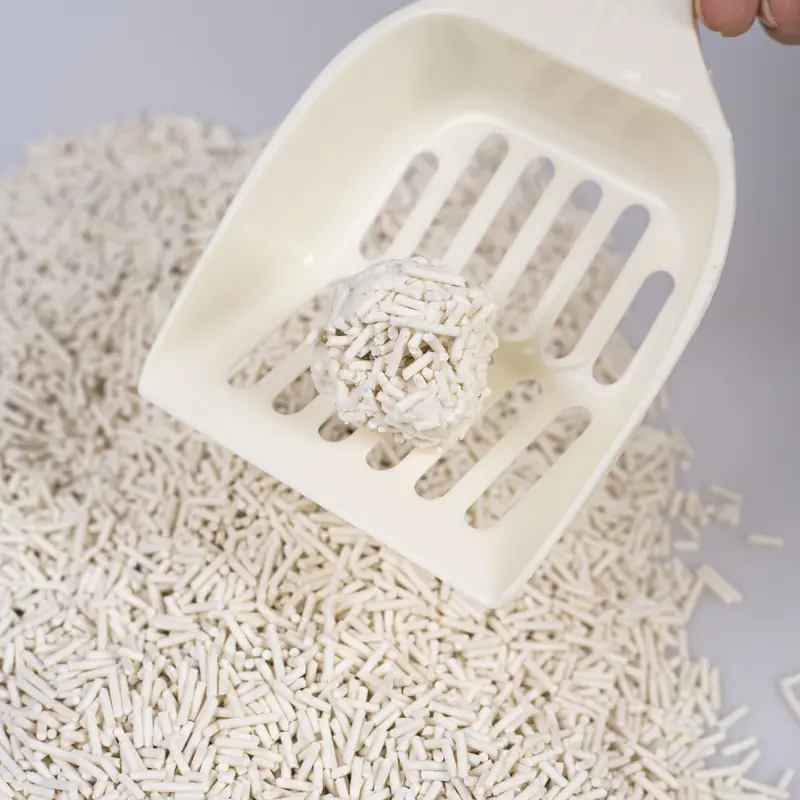
387.webp)
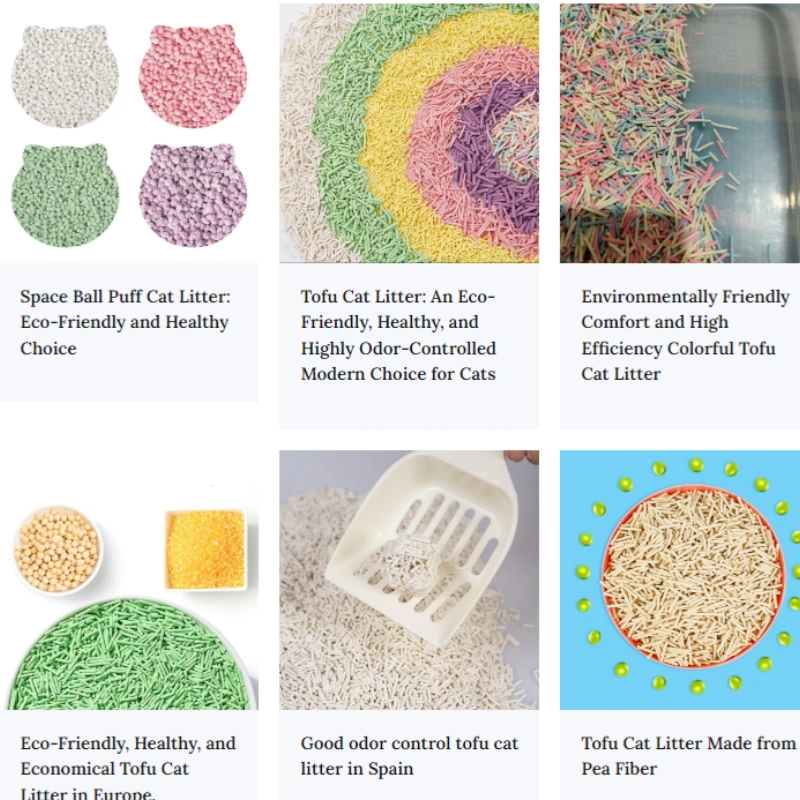
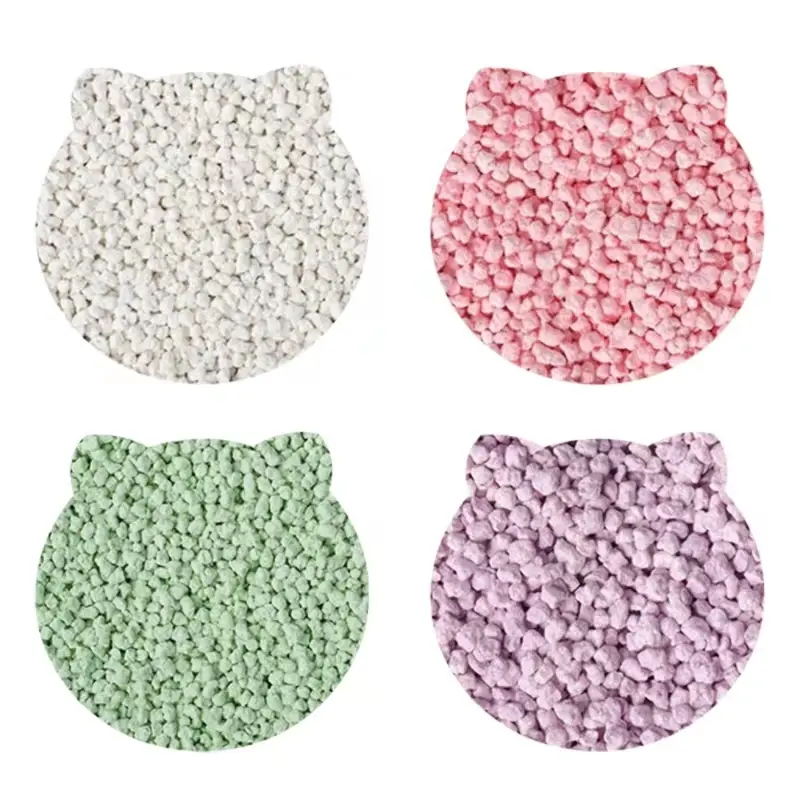
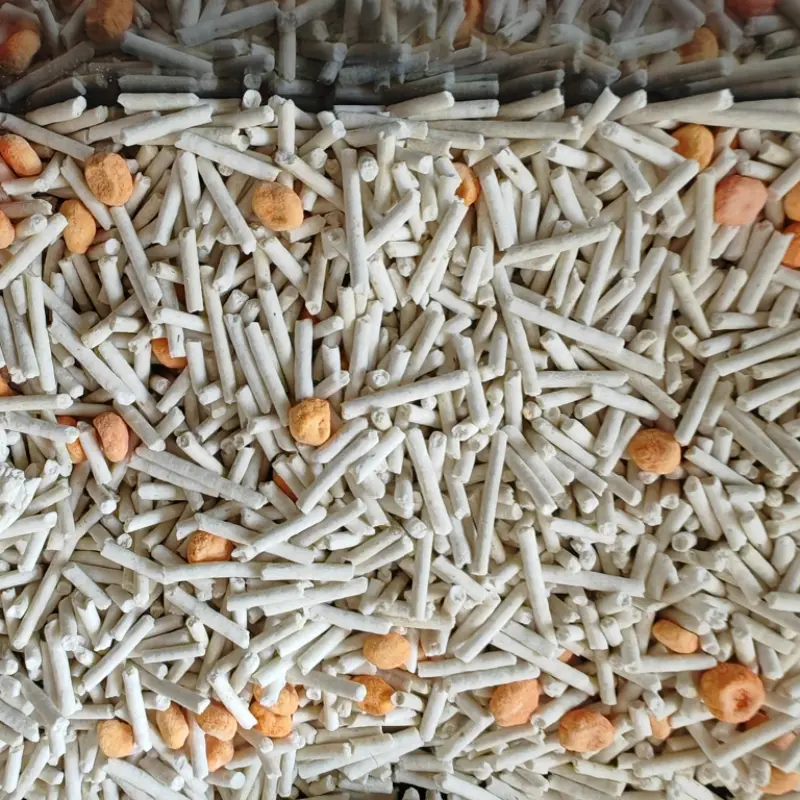
122.webp)
